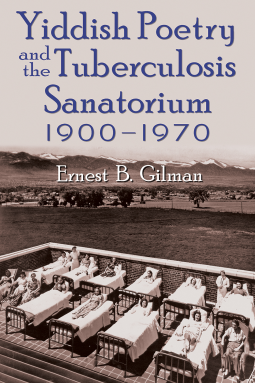Please wait... This may take a moment.
Yiddish Poetry and the Tuberculosis Sanatorium 1900-1970
This title was previously available on NetGalley and is now archived.
Pub Date
Dec 01 2014
| Archive Date
Dec 03 2014
Description
Part literary history and part medical sociology, Gilman’s book chronicles the careers of three major immigrant Yiddish poets of the twentieth century—Solomon Bloomgarten (Yehoash), Sholem Shtern, and H. Leivick—all of whom lived through, and wrote movingly of, their experience as patients in a tuberculosis sanatorium. Gilman addresses both the formative influence of the sanatorium on the writers’ work and the culture of an institution in which, before the days of antibiotics, writing was encouraged as a form of therapy. He argues that each writer produced a significant body of work during his recovery, itself an experience that profoundly influenced the course of his subsequent literary career. Seeking to recover the "imaginary" of the sanatorium as a scene of writing by doctors and patients, Gilman explores the historical connection between tuberculosis treatment and the written word.
Part literary history and part medical sociology, Gilman’s book chronicles the careers of three major immigrant Yiddish poets of the twentieth century—Solomon Bloomgarten (Yehoash), Sholem Shtern...
Description
Part literary history and part medical sociology, Gilman’s book chronicles the careers of three major immigrant Yiddish poets of the twentieth century—Solomon Bloomgarten (Yehoash), Sholem Shtern, and H. Leivick—all of whom lived through, and wrote movingly of, their experience as patients in a tuberculosis sanatorium. Gilman addresses both the formative influence of the sanatorium on the writers’ work and the culture of an institution in which, before the days of antibiotics, writing was encouraged as a form of therapy. He argues that each writer produced a significant body of work during his recovery, itself an experience that profoundly influenced the course of his subsequent literary career. Seeking to recover the "imaginary" of the sanatorium as a scene of writing by doctors and patients, Gilman explores the historical connection between tuberculosis treatment and the written word.
Advance Praise
"Gilman’s work is important because it examines three major writers, often not seen within the Canadian-American literary canon, from the perspective of their common illness . . . it opens the question of the relationship between ethnicity, Diaspora, disease, and literature in a fascinating and intelligent way."—Sander Gilman, Distinguished Professor of the Liberal Arts and Sciences, Emory University
"Gilman is a skillful writer, with a very engaging and readable style. He utilizes a wealth of secondary sources, incorporates robust background literature about tuberculosis along with close analysis of the poetry of three major Jewish immigrant writers, and offers new insight into the works of Yehoash, Leivick and Shtern from the unusual perspective of the influence of tuberculosis."—Jeanne E. Abrams, author of Revolutionary Medicine: The Founding
"Gilman’s work is important because it examines three major writers, often not seen within the Canadian-American literary canon, from the perspective of their common illness . . . it opens the...
Advance Praise
"Gilman’s work is important because it examines three major writers, often not seen within the Canadian-American literary canon, from the perspective of their common illness . . . it opens the question of the relationship between ethnicity, Diaspora, disease, and literature in a fascinating and intelligent way."—Sander Gilman, Distinguished Professor of the Liberal Arts and Sciences, Emory University
"Gilman is a skillful writer, with a very engaging and readable style. He utilizes a wealth of secondary sources, incorporates robust background literature about tuberculosis along with close analysis of the poetry of three major Jewish immigrant writers, and offers new insight into the works of Yehoash, Leivick and Shtern from the unusual perspective of the influence of tuberculosis."—Jeanne E. Abrams, author of Revolutionary Medicine: The Founding
Marketing Plan
No Marketing Info Available
No Marketing Info Available
Available Editions
| EDITION |
Hardcover |
| ISBN |
9780815633792 |
| PRICE |
$24.95 (USD)
|
Additional Information
Available Editions
| EDITION |
Hardcover |
| ISBN |
9780815633792 |
| PRICE |
$24.95 (USD)
|
Average rating from 5 members
Readers who liked this book also liked:





